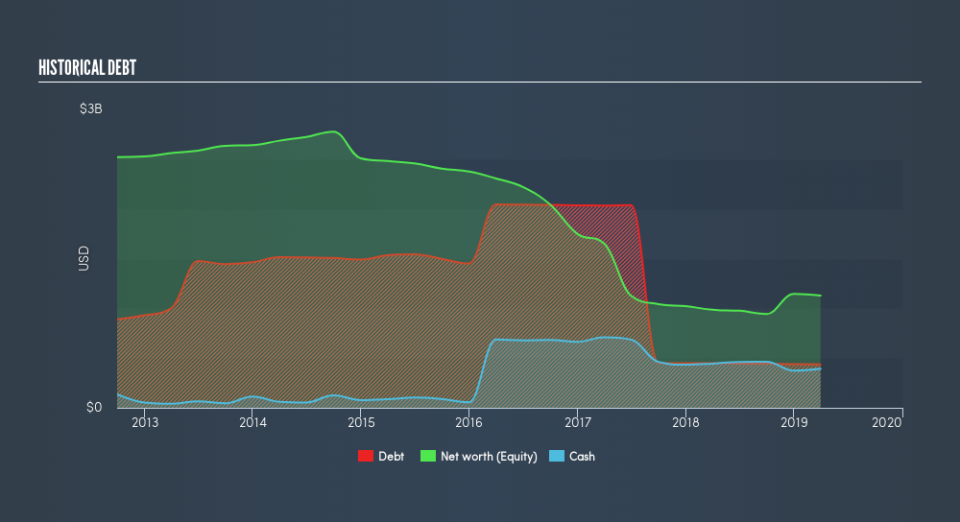Here's Why Tidewater (NYSE:TDW) Can Afford Some Debt

Warren Buffett famously said, 'Volatility is far from synonymous with risk.' So it seems the smart money knows that debt - which is usually involved in bankruptcies - is a very important factor, when you assess how risky a company is. We can see that Tidewater Inc. (NYSE:TDW) does use debt in its business. But the more important question is: how much risk is that debt creating?
What Risk Does Debt Bring?
Generally speaking, debt only becomes a real problem when a company can't easily pay it off, either by raising capital or with its own cash flow. In the worst case scenario, a company can go bankrupt if it cannot pay its creditors. While that is not too common, we often do see indebted companies permanently diluting shareholders because lenders force them to raise capital at a distressed price. Of course, plenty of companies use debt to fund growth, without any negative consequences. The first thing to do when considering how much debt a business uses is to look at its cash and debt together.
View our latest analysis for Tidewater
What Is Tidewater's Debt?
The chart below, which you can click on for greater detail, shows that Tidewater had US$437.4m in debt in March 2019; about the same as the year before. However, it does have US$392.4m in cash offsetting this, leading to net debt of about US$45.0m.
How Healthy Is Tidewater's Balance Sheet?
Zooming in on the latest balance sheet data, we can see that Tidewater had liabilities of US$156.1m due within 12 months and liabilities of US$525.5m due beyond that. On the other hand, it had cash of US$392.4m and US$231.9m worth of receivables due within a year. So its liabilities total US$57.3m more than the combination of its cash and short-term receivables.
Of course, Tidewater has a market capitalization of US$817.8m, so these liabilities are probably manageable. Having said that, it's clear that we should continue to monitor its balance sheet, lest it change for the worse. There's no doubt that we learn most about debt from the balance sheet. But ultimately the future profitability of the business will decide if Tidewater can strengthen its balance sheet over time. So if you want to see what the professionals think, you might find this free report on analyst profit forecasts to be interesting.
In the last year Tidewater managed to grow its revenue by 3.7%, to US$437m. We usually like to see faster growth from unprofitable companies, but each to their own.
Caveat Emptor
Over the last twelve months Tidewater produced an earnings before interest and tax (EBIT) loss. To be specific the EBIT loss came in at US$38m. Considering that alongside the liabilities mentioned above does not give us much confidence that company should be using so much debt. Quite frankly we think the balance sheet is far from match-fit, although it could be improved with time. However, it doesn't help that it burned through US$16m of cash over the last year. So to be blunt we think it is risky. For riskier companies like Tidewater I always like to keep an eye on whether insiders are buying or selling. So click here if you want to find out for yourself.
If, after all that, you're more interested in a fast growing company with a rock-solid balance sheet, then check out our list of net cash growth stocks without delay.
We aim to bring you long-term focused research analysis driven by fundamental data. Note that our analysis may not factor in the latest price-sensitive company announcements or qualitative material.
If you spot an error that warrants correction, please contact the editor at editorial-team@simplywallst.com. This article by Simply Wall St is general in nature. It does not constitute a recommendation to buy or sell any stock, and does not take account of your objectives, or your financial situation. Simply Wall St has no position in the stocks mentioned. Thank you for reading.

